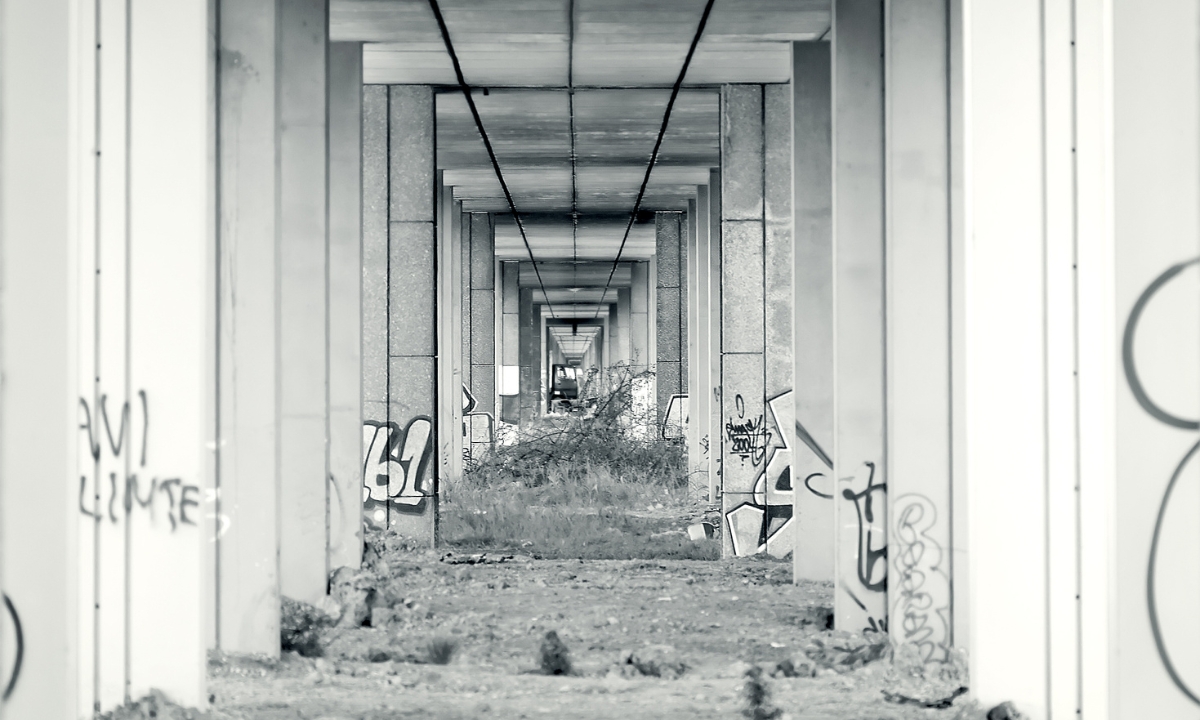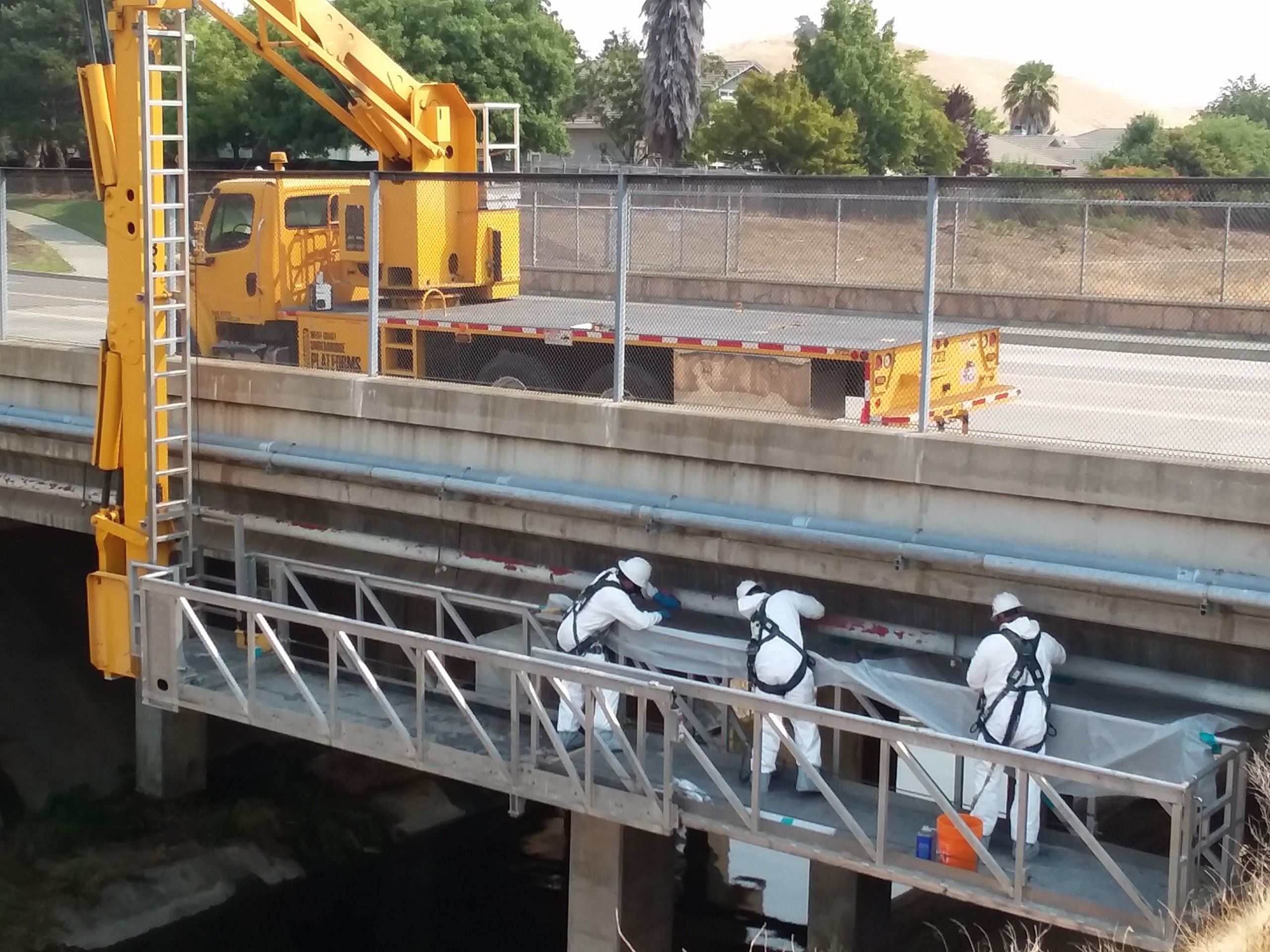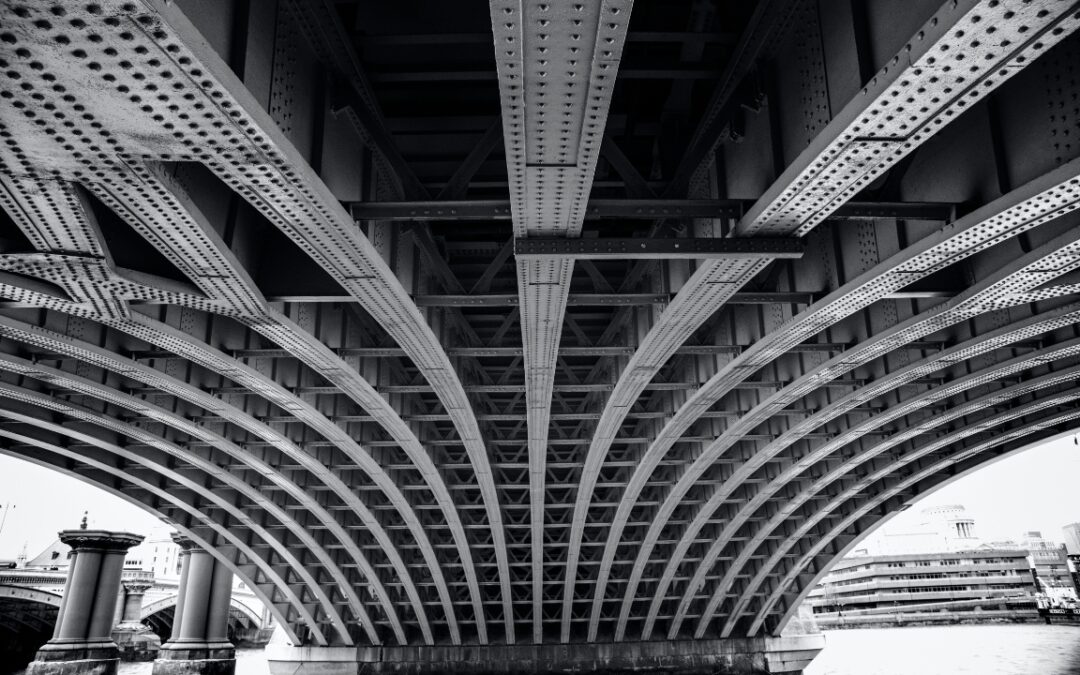The state of affairs with America’s bridges can be summarized in the 2021 Infrastructure Report Card from the American Society of Civil Engineers (ASCE):
“There are more than 617,000 bridges across the United States. Currently, 42% of all bridges are at least 50 years old, and 46,154, or 7.5% of the nation’s bridges, are considered structurally deficient, meaning they are in “poor” condition. Unfortunately, 178 million trips are taken across these structurally deficient bridges every day.”
The integrity of our nation’s bridges is crucial for ensuring the safety and smooth functioning of our transportation infrastructure. Regular inspections play a vital role in bridge maintenance, identifying potential issues and preventing bridge failures. However, traditional bridge inspection methods often present significant challenges, hindering efficiency, safety, and the overall effectiveness of the process. Under bridge platforms – specialized equipment designed to provide extensive access to bridge structures – offer a revolutionary solution, transforming how bridge inspections are conducted. These innovative platforms provide a safe and efficient way to access the underside of bridges, traditionally a difficult and risky area to reach. In addition, they are increasingly being equipped with advanced technology that is revolutionizing infrastructure work by enhancing data collection capabilities and streamlining the inspection process, making them a valuable asset for bridge maintenance programs.

Evolution of Bridge Inspections
Traditionally, highway bridge inspections involved labor-intensive and time-consuming methods. Inspectors typically relied on scaffolding, rope access, or rappelling to reach the underside of bridges. These methods were not only inefficient but also posed significant safety risks to the inspection crew.
Additionally, limited access often resulted in incomplete inspections, potentially missing crucial details that could lead to undetected damage.
The growing need for a safer and more efficient approach to bridge inspections paved the way for the development of advanced technologies like under bridge platforms. These platforms have revolutionized the way we inspect bridges, prioritizing both safety and efficiency.
Under Bridge Platforms: A Closer Look
Under bridge platforms are specialized mobile platforms suspended from a crane or other lifting mechanism. They offer a dedicated work area for inspectors to access and inspect the underside of bridges with ease. Here’s a breakdown of their key functionalities:
- Versatility: Platforms are designed with adjustable height and reach, allowing inspectors to access different sections of the bridge soffit at various angles.
- Spacious work area: The platform provides a stable and comfortable work environment for inspectors to perform their tasks effectively.
- Safety focus: Modern under bridge platforms prioritize safety with features like guardrails, fall protection systems, and slip-resistant surfaces.
These features, combined with the ease of access they provide, make under bridge platforms a significant improvement over traditional inspection methods.
Unlocking the Power of Advanced Technology
Under bridge platforms go beyond mere accessibility; they are integrated with advanced technology that further enhances the inspection process:
- High-definition cameras: Equipped with high-resolution cameras, inspectors can capture clear and detailed images of the bridge structure, enabling them to identify potential problems with greater accuracy.
- LiDAR (Light Detection and Ranging) scanners: These scanners create 3D models of the bridge, allowing for precise measurements and detailed analysis of potential defects.
- Non-destructive testing (NDT) equipment: NDT tools, such as ultrasonic testing and radiography, can be used in conjunction with the platform to assess the internal condition of the bridge elements without causing any damage.
These innovative technologies, combined with the platform’s accessibility, significantly improve the efficiency in inspections as well as the accuracy of bridge inspections compared to traditional methods.
Streamlining Inspections and Reducing Costs
Under bridge platforms offer several advantages that streamline the inspection process:
- Faster setup and teardown: Unlike traditional methods that require extensive setup and teardown times, under bridge platforms can be deployed and retracted much faster, minimizing downtime.
- Improved accessibility: The platforms provide immediate and unrestricted access to previously difficult-to-reach areas, allowing inspectors to cover a larger surface area in less time.
- Enhanced data collection: Integrated technologies facilitate the efficient collection of detailed data in the form of images, 3D models, and NDT readings, which can be further analyzed and documented for future reference.
By improving efficiency, under bridge platforms significantly reduce the overall cost associated with bridge inspections, making them a cost-effective solution for bridge maintenance programs.
Prioritizing Safety with Every Inspection
Safety is paramount during any bridge inspection, and under bridge platforms are designed to protect the well-being of the inspection crew. They are equipped with several safety features, including guardrails and fall protection systems to prevent falls from the platform, mitigating the risk of injuries.
In addition, the platform surface is designed to minimize the risk of slips and falls, even in wet or icy conditions as well as emergency stop buttons. These buttons allow the operator to immediately stop the platform’s movement in case of any unforeseen circumstances.
Furthermore, the use of under bridge platforms eliminates the need for inspectors to use risky methods like rappelling or navigating on uneven surfaces, significantly reducing the overall risk of accidents and injuries.

Future Trends
The development of under bridge platform technology shows no signs of slowing down, and the future holds exciting possibilities for further advancements:
- Autonomous platforms: Platforms equipped with autonomous navigation capabilities could potentially perform inspections independently, further reducing the risk to human inspectors and allowing for more frequent and automated monitoring of bridge health.
- Advanced data analysis and integration: Integration of artificial intelligence (AI) and machine learning (ML) could enable platforms to analyze data collected during inspections in real-time, identifying potential problems and recommending actions, essentially creating an intelligent inspection assistant for human crews.
- Remote inspection and monitoring: Integration with remote control and monitoring technology could allow inspectors to operate platforms remotely, minimizing their exposure to hazardous environments and facilitating inspections in difficult-to-reach locations.
These potential advancements promise to further revolutionize bridge inspections, making them even safer, more efficient, and providing deeper insights into the health of our vital highway bridges as well as other urban infrastructure.
Bridge Rehabilitation and Maintenance
Under bridge platforms play a crucial role in bridge preservation efforts by enabling efficient and thorough inspections, leading to early detection of potential problems. This allows for timely implementation of necessary maintenance and repairs, preventing minor issues from escalating into major structural problems that could require extensive and costly bridge rehabilitation efforts.
Beyond inspections, under bridge platforms can also facilitate maintenance tasks by providing a stable and accessible platform for workers to perform repairs, cleaning, and other essential maintenance activities. This significantly reduces the time and resources required for maintenance compared to traditional methods, ultimately contributing to the longevity and overall health of the bridge.
The Overarching Benefits of Under Bridge Platforms
Under bridge platforms have emerged as a game-changer in the world of bridge inspections and maintenance. They offer a multitude of benefits, including:
- Enhanced safety: By eliminating the need for risky traditional methods and incorporating advanced safety features, under bridge platforms significantly reduce the risk of accidents and injuries for inspection crews.
- Improved efficiency: Platforms streamline the inspection process, reducing setup and teardown times, improving accessibility, and facilitating faster and more comprehensive data collection.
- Advanced data collection and analysis: Integration with cutting-edge technologies empowers inspectors with detailed visual, 3D, and non-destructive testing data, providing valuable insights into bridge health.
- Cost-effectiveness: By reducing time, resource requirements, and potential repair costs through early problem detection, under bridge platforms contribute to significant cost savings in bridge maintenance programs.
- Bridge preservation: Early detection and timely repairs enabled by efficient inspections with under bridge platforms play a crucial role in extending the lifespan and ensuring the safety of our bridges.
The future of under bridge platform technology is bright, with ongoing advancements promising even greater efficiency, safety, and data-driven insights for bridge inspections and maintenance. This technology will undoubtedly play a vital role in ensuring the longevity and safety of our vital infrastructure for generations to come.

Under Bridge Platforms Offers the Best in Bridge Inspection Equipment
The team at Under Bridge Platforms is proud to provide our clients throughout the Western States, including California, Washington, Oregon, Idaho, Nevada, Montana, and Wyoming with the very best in quality under bridge platform equipment.
Our expanding inventory of under bridge access platforms includes state-of-the-art bridge access platforms such as the versatile Aspen A-30 Unit or the massive DFM Bridgemaster-Art-B-4.
With a professional firm you can rely on to guide you through the process, buying or renting the right under bridge inspection vehicle and bridge inspection platform equipment for your project means we are here to help you make the proper selection.
And we work hard to keep it that way.
Contact us today and let us help you with your under bridge platform and bridge access needs.


Recent Comments